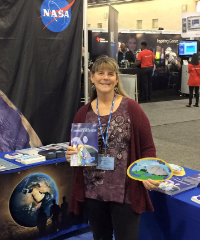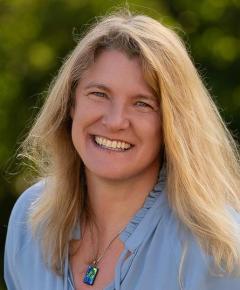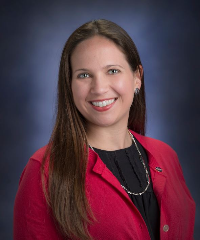Community Blogs
Community Blogs
Discover how the GLOBE community is engaging in all things GLOBE through the community blog posts below.
Learn how to create a GLOBE community blog post.
Filter By:
Blogs List
We have all been dismayed to see the extent of the damage done during the recent landslides that occurred after forest fires had destroyed much of the vegetation, and then intense rain caused a horrific landslide to occur in Montecito. You can read more here about how NASA's Operational Land Imager (OLI) on Landsat 8 was able to acquire natural color imagery of the affected region both before and after the landslide occurred, which enables us to observe the impact of this natural disaster on the environment. NASA's Global Precipitation Measurement mission (GPM) measured the ...
Read More »
Posted in:
Curriculum:
STEM
SCIENCE AND MATH
TECHNOLOGY
Event Topics:
CAMPAIGNS AND PROJECTS (IOPS, ETC)
Field Campaigns:
EL NIÑO
GLOBE Science Topics:
EARTH SYSTEM SCIENCE
CLIMATE CHANGE
BACKYARD SCIENCE
CLIMATE
EARTH AS A SYSTEM
SCIENTIST SKILLS
GLOBE PROTOCOLS
Investigation Areas:
ATMOSPHERE
EARTH AS A SYSTEM
HYDROSPHERE
PEDOSPHERE (SOIL)
BIOSPHERE
Learning Activities:
EARTH AS A SYSTEM
ATMOSPHERE AND CLIMATE
LAND COVER/BIOLOGY
HYDROLOGY
SOIL
Primary Audience:
PARTNERS
SCIENTISTS
COUNTRY COORDINATORS
ALUMNI
TRAINERS
TEACHERS
STUDENTS
As you know, Phase III of the GLOBE ENSO Student Research Campaign is focusing on "Water in Our Environment" through a set of Guiding Investigative Questions. Across our planet, water is used for everything.
Check out this eye-opening Time Series of Global Irrigation and Groundwater Depletion Maps revealing geographical patterns in the use of fresh water for agriculture. The map visualization starts at 1950 and moves all the way through until the projected data to 2082.
This visualization shows the importance of water, water availability, and water conservation.
Posted in:
Field Campaigns:
EL NIÑO
Primary Audience:
TRAINERS
TEACHERS
PARTNERS
STUDENTS
SCIENTISTS
ALUMNI
COUNTRY COORDINATORS
"Our traverse is complete, our gear has been stored for next season, and we are ready to head north to warmer climates."
Check out the adventures HERE!
Posted in:
Primary Audience:
TRAINERS
TEACHERS
STUDENTS
PARTNERS
SCIENTISTS
ALUMNI
COUNTRY COORDINATORS
Hola a toda la Comunidad GLOBE del mundo, aprovechamos este mensaje para saludarlos y expresarles nuestras primeras palabras a través de este blog.
Nos alegra mucho ser parte de esta comunidad motivada por formar a los nuevos científicos Sistema Tierra y que tanto necesitamos. En nuestro país venimos promoviendo ello y estamos seguros que muchas más escuelas y profesores han encontrado en GLOBE una herramienta útil para la enseñanza de las ciencias de la Tierra a sus estudiantes. Desde ya estaremos informándoles sobre nuestras novedades. Por ahora estamos traduciendo muchos materiales ...
Posted in:
The hotel and dorm rooms are being reserved across the country for
the United
States Regional Student Research Symposia (SRS) . The agendas are
roughed out. The speakers are confirming. Students are carrying out
GLOBE protocols and analyzing data. Teachers are applying for funding
to support team travel (due February 1st).
All of this gives me a chance to think about the students that have
attended the SRS the past two years. GLOBE Partnership coordinators,
GIO and I have met some incredible students and teachers. We'll be
posting their stories for you to read too. ...
Posted in:
Curriculum:
SCIENCE AND MATH
TECHNOLOGY
STEM
GLOBE Science Topics:
SCIENTIST SKILLS
Primary Audience:
TEACHERS
Note: The post below was originally sent out to South Dakota GLOBE trained educators as the Winter E-News
~~~~~~~~~~~~~~~~~~~~~~~~~~~~~~~~
Hello SD GLOBE Educator!
I’m touching base briefly with all the GLOBE goodness happening in our state.
Data and Stipends
Thank you to those who have entered data for the last quarter of 2017. Those who have reported data are Julie Olson, Vikki Hasche, Jane Amiotte, Deb Springman, Robert Stahl, Jonathan Stahl, Patty Martin.
If you entered data and are not listed above, please let me know.
If you did not get a chance ...
Posted in:
Let me tell you what is going on in parts of my country. People are cutting trees very brutally and no alternate trees are there. As a result, the weather in Pakistan is changed drastically over the last 5 years. We face smog during winter and its third time that I am facing a worst weather in Lahore in December every year.
What we need is to be a little extra careful when it come to environment. We need to know that being from the same planet, our actions effect each other in good and bad equally. If we are good enough to cultivate a few trees before cutting any, we will have a ...
Posted in:
Satellites can detect and collect a lot of observations in very short amount of time. It is simple to think that anything that is white in an image is a cloud. Well, not always.
Look at these beautiful images taken by the GOES 16 satellite of the recent "Winter Weather Bomb" that left a blanket of snow from South Georgia to New England on January 4, 2018. Click here and watch a loop of images from the GOES 16 satellite for January 4, 2018.
GOES 16 Image taken on January 4, 2018 at 171720Z
GOES 16 Image taken on January 4, 2018 at 201720Z
...
Posted in:
Curriculum:
STEM
EDUCATION RESEARCH
Event Topics:
OTHER
GLOBE Science Topics:
SCIENTIST SKILLS
GLOBE PROTOCOLS
GENERAL SCIENCE
BACKYARD SCIENCE
CLIMATE
Investigation Areas:
CLOUDS
Learning Activities:
ATMOSPHERE AND CLIMATE
Primary Audience:
TRAINERS
TEACHERS
STUDENTS
PARTNERS
SCIENTISTS
As many of us have seen on the news recently , a great many people in southern California were impacted by mudslides last night. We know these dangerous natural disasters occur all over the world. Scientists globally are working hard to be able to better predict these devastating events. You can learn more about the use of NASA's satellite data to detect potential landslides here . I recently attended a hearing for government officials that focused on the increasing danger we face from landslides and mudslides and wrote this blog that summarized many of the ...
Posted in:
Curriculum:
STEM
EDUCATION RESEARCH
SCIENCE AND MATH
TECHNOLOGY
Event Topics:
CAMPAIGNS AND PROJECTS (IOPS, ETC)
GLOBE LEARNING EXPEDITIONS
Field Campaigns:
EL NIÑO
GLOBE Science Topics:
CLIMATE CHANGE
CLIMATE
EARTH AS A SYSTEM
SCIENTIST SKILLS
GLOBE PROTOCOLS
Investigation Areas:
ATMOSPHERE
EARTH AS A SYSTEM
HYDROSPHERE
PEDOSPHERE (SOIL)
BIOSPHERE
Learning Activities:
EARTH AS A SYSTEM
ATMOSPHERE AND CLIMATE
LAND COVER/BIOLOGY
SOIL
HYDROLOGY
Primary Audience:
PARTNERS
SCIENTISTS
ALUMNI
COUNTRY COORDINATORS
TRAINERS
TEACHERS
STUDENTS
Teacher's Guide:
DOCUMENT TYPES
Here at NASA Langley we've started the year with snow, and lots of it!
Has all this snow and weather gotten you hooked on the weather? Do you like to watch the weather reports on TV or on your phone? Dr. Yolanda Shea, a scientist at NASA Langley Research Center, used to do just that when she was younger. See what inspired her and how she became a NASA scientist! Comment and share how this video inspires you!
Also, with all this snow on the ground, be sure to submit your cloud reports! Enter your data through GLOBE or use the GLOBE Observer app and follow ...
Posted in:
Curriculum:
STEM
GLOBE Science Topics:
GENERAL SCIENCE
SCIENTIST SKILLS
BACKYARD SCIENCE
Primary Audience:
TRAINERS
TEACHERS
STUDENTS
COUNTRY COORDINATORS
PARTNERS
The ENSO Phase III Field Measurement Campaign is focusing on “Water in Our Environment” during the 2017-2018 school year. Each month we have a webinar using Zoom, and we like to spotlight a different region each time. Our Feb. 8th spotlight will shine on the Near East and Africa.
On February 8 th , we would like to shine this spotlight on the wonderful GLOBE scientists, teachers, and students from all 13 GLOBE countries in this region. We would therefore like to reach out and invite anyone within the GLOBE Program to consider participating in this webinar. Everyone is invited to ...
Posted in:
Curriculum:
STEM
SCIENCE AND MATH
TECHNOLOGY
Event Topics:
CAMPAIGNS AND PROJECTS (IOPS, ETC)
SCIENCE SYMPOSIA AND FAIRS
Field Campaigns:
WATERSHEDS
SEASONS AND BIOMES
EL NIÑO
GLOBE Science Topics:
EARTH SYSTEM SCIENCE
CLIMATE CHANGE
DATA INCLUDED
BACKYARD SCIENCE
CLIMATE
EARTH AS A SYSTEM
SCIENTIST SKILLS
GLOBE PROTOCOLS
GLOBE Working Groups:
EDUCATION WORKING GROUP
TECHNOLOGY WORKING GROUP
SCIENCE WORKING GROUP
Investigation Areas:
ATMOSPHERE
EARTH AS A SYSTEM
HYDROSPHERE
PEDOSPHERE (SOIL)
BIOSPHERE
News Topics:
VIRTUAL SCIENCE FAIR
MEETINGS
Primary Audience:
PARTNERS
SCIENTISTS
ALUMNI
COUNTRY COORDINATORS
TRAINERS
TEACHERS
STUDENTS
Greetings from NASA and the GLOBE ENSO Student Research Campaign!
As you know, as part of Phase III: Water in Our Environment, we have been having data collection events each month that focus on Short Observation & Data Analysis (SODA). Following these data collection events, students and teachers are welcome to present at SODA webinar. So far, we have had SODA presentations from Croatia and the United States. Check out our ENSO Phase III webinar page .
As a refresher on how the SODA webinars work:
Introduction of featured teacher, students and school (2 ...
Posted in:
Field Campaigns:
EL NIÑO
Primary Audience:
TRAINERS
STUDENTS
TEACHERS
PARTNERS
SCIENTISTS
ALUMNI
COUNTRY COORDINATORS
"Our route travels north along the South Pole Operational Traverse route for about 100km, then turns left and heads out to 87.979 degrees south. 750 kilometers of the great flat white!"
Check out the latest blog from two NASA ICESat-2 scientists and their South Pole traverse.
Check it out HERE!
Posted in:
Primary Audience:
TRAINERS
STUDENTS
TEACHERS
PARTNERS
SCIENTISTS
ALUMNI
COUNTRY COORDINATORS
It turns out that we are most likely entering another mild La Niña winter across the globe. This article, “ La Nina Makes a Quiet Return ”, describes how scientists are able to use data on sea surface temperatures from were made by altimeters on the Jason-2 and Jason-3 satellites, and show averaged sea surface height anomalies. Climatologists are predicting that this La Niña should last through the 2017-2018 winter period in the northern hemisphere, and then should change back to neutral conditions by late spring.
Be sure to become a ...
Posted in:
Curriculum:
STEM
TECHNOLOGY
SCIENCE AND MATH
Event Topics:
CAMPAIGNS AND PROJECTS (IOPS, ETC)
Field Campaigns:
EL NIÑO
GLOBE Science Topics:
EARTH SYSTEM SCIENCE
CLIMATE CHANGE
BACKYARD SCIENCE
CLIMATE
EARTH AS A SYSTEM
SCIENTIST SKILLS
Investigation Areas:
ATMOSPHERE
EARTH AS A SYSTEM
HYDROSPHERE
PEDOSPHERE (SOIL)
BIOSPHERE
Learning Activities:
EARTH AS A SYSTEM
ATMOSPHERE AND CLIMATE
News Topics:
SCRC RESEARCH
Primary Audience:
PARTNERS
SCIENTISTS
ALUMNI
COUNTRY COORDINATORS
TRAINERS
TEACHERS
STUDENTS
Too much water can have devastating consequences when it falls too quickly on Earth's surface. On January 9th, the " Water in Our Environment " webinar will spotlight the experiences of our GLOBE community in Asia and the Pacific.
Earlier this week in the Philippines, tropical cyclone Kai-Tak wrecked havoc on this region as it caused extreme flooding and landslides .
On December 4th and 5th, tropical cyclone Ockhi was the strongest cyclone to develop in the Arabian Sea since 2015, and it brought intense rainfall to the western part of India.
A recent CNN report stated ...
Posted in:
Curriculum:
STEM
SCIENCE AND MATH
Event Topics:
CAMPAIGNS AND PROJECTS (IOPS, ETC)
Field Campaigns:
WATERSHEDS
EL NIÑO
SMAP
GPM
GLOBE Science Topics:
EARTH SYSTEM SCIENCE
GENERAL SCIENCE
CLIMATE CHANGE
DATA INCLUDED
BACKYARD SCIENCE
CLIMATE
EARTH AS A SYSTEM
SCIENTIST SKILLS
GLOBE PROTOCOLS
Investigation Areas:
ATMOSPHERE
EARTH AS A SYSTEM
HYDROSPHERE
PEDOSPHERE (SOIL)
BIOSPHERE
Learning Activities:
EARTH AS A SYSTEM
ATMOSPHERE AND CLIMATE
LAND COVER/BIOLOGY
HYDROLOGY
SOIL
News Topics:
CALENDAR
TRAINING
Primary Audience:
PARTNERS
SCIENTISTS
ALUMNI
COUNTRY COORDINATORS
TRAINERS
TEACHERS
STUDENTS
Teacher's Guide:
INVESTIGATION AREA DOCUMENTS
We are in the middle of our December observations for the Urban Heat Island Effect/Surface Temperature Field Campaign. 69 schools have entered 1323 observations. As developer of the surface temperature protocol I wanted to thank everyone who has taken observations . It is your data that will allow other students to create interesting research projects as well as providing a database for me and my students to conduct research. We have schools all over the world taking surface temperature observations to contribute to the campaign. I want to talk about problems some schools are having ...
Posted in:
The GLOBE Clouds team loves coming up with ways to help students and teachers identify clouds. I've been blessed to visit a number of 4th grade full inclusion classrooms and want to share my quick cloud ID and data collection activity outline!
Anchor question: Do all clouds look the same, even from space?
Goal: Students identify, collect and submit cloud observations by using their own notes and clues for each possible cloud type.
Objectives: Students will,
(A) Recognize that clouds are part of the water cycle.
(B) Investigate cloud types ...
Posted in:
Curriculum:
STEM
GLOBE Science Topics:
SCIENTIST SKILLS
GLOBE PROTOCOLS
Learning Activities:
ATMOSPHERE AND CLIMATE
Primary Audience:
TRAINERS
TEACHERS
Teacher's Guide:
UPPER PRIMARY: 3-5
RESOURCES
Check out the featured NASA article on the "88S' 470-mile Antarctic Expedition.
"In temperatures that can drop below -20 degrees Fahrenheit, along a route occasionally blocked by wind-driven ice dunes, a hundred miles from any other people, a team led by two NASA scientists will survey an unexplored stretch of Antarctic ice."
See it HERE!
We flew from Christchurch to McMurdo – 7.5 hours on a C-130 airplane operated by the Royal New Zealand Air Force. There were 38 passengers in the front of the aircraft and three pallets of gear in the rear. The passenger space is extremely tight; you have to work together with your neighbors to share space in an effort to remain as comfortable as possible for the long flight. And ladies, the restroom facilities are not fabulous.
Greetings from McMurdo!
Posted in:
Primary Audience:
TRAINERS
TEACHERS
STUDENTS
PARTNERS
SCIENTISTS
ALUMNI
COUNTRY COORDINATORS
Follow two NASA ICESat-2 scientists, Dr. Tom Neumann and Dr. Kelly Brunt, as they head to Antarctica for 2 months to do some preliminary ICESat-2 measurements. They will travel to 88S latitude and collect measurements of the ice sheet elevation around part of the circle at that latitude. We will compare our measurements with those from ICESat-2 shortly after launch to evaluate the performance of the satellite. Click on the blog title below to see Blog 1 from the trip.
"Heading South, to New Zealand and Beyond"
Posted in:
Primary Audience:
TRAINERS
TEACHERS
STUDENTS
PARTNERS
SCIENTISTS
ALUMNI
COUNTRY COORDINATORS
—
20 Items per Page













